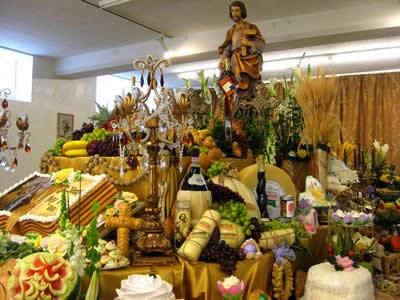Q. 1. On the upcoming Feast of Saint Joseph, my parish
is celebrating what they call the "Saint Joseph's Table." I never heard of this
event. What can you tell me about it?
A. 1. In a short summary, according to legend (there are a
variety of them), there was a famine in Sicily (Italy) many centuries ago. The
villagers prayed to Saint Joseph, the foster-father of Jesus, and asked his
intercession before the Throne of God. Their prayers were answered. With the ending
of the dreadful famine, a special feast of thanksgiving was held in commemoration
of the Saint. This celebration became tradition. Wealth families prepared huge
buffets. They then invited the less fortunate people of the village, especially the
homeless and sick

What originally started as a personal devotion, limited to the residence of the believers, has now expanded to some Churches where the entire parish takes part in this celebration.
The Feast day for Saint Joseph involves altars, often referred to as tables, in the Catholic churches. Altars have a statue or large Holy picture of Saint Joseph as the centerpiece. They are laden with candles, flowers and sweets. Because the Feast day falls during the Catholic Lenten season, no meat is served. Instead, parishioners serve visitors pasta Milanese sprinkled with breadcrumbs to symbolize St. Joseph’s sawdust. Other servings include egg dishes with vegetables, stuffed artichokes and seafood.
Homemade cookies and cakes and have also become mainstream in the U.S., including the famous Sicilian cannoli — a tubular crust filled with ricotta cheese and, sfinci, a fried dough sprinkled with powdered sugar.
As per tradition, parishes do not charge visitors for the meals. Instead, they ask for free will donations. The funds are later donated to local charities and food pantries.